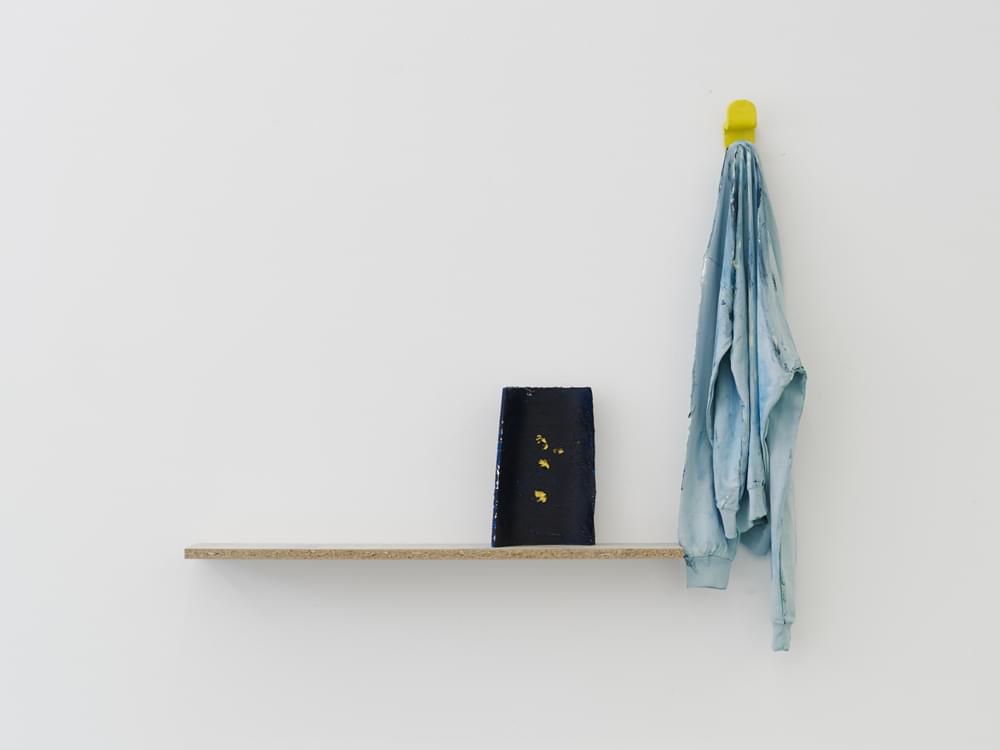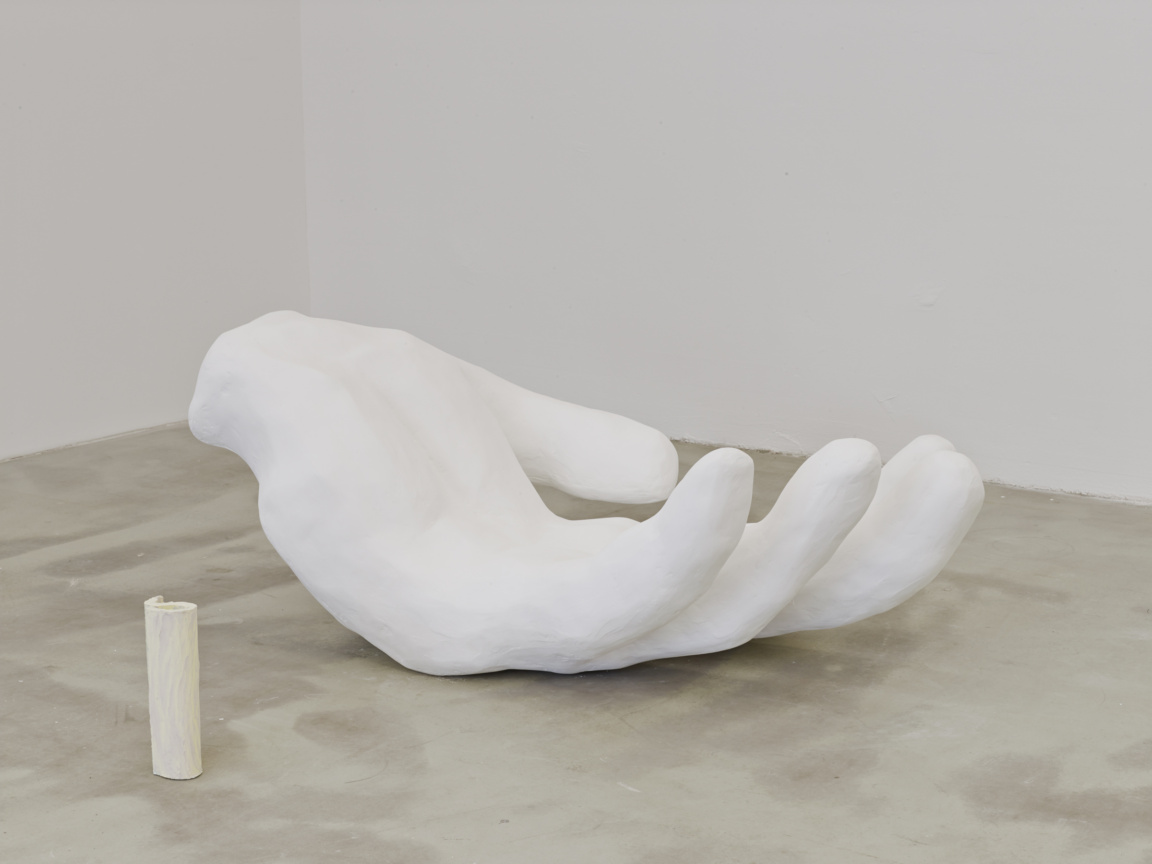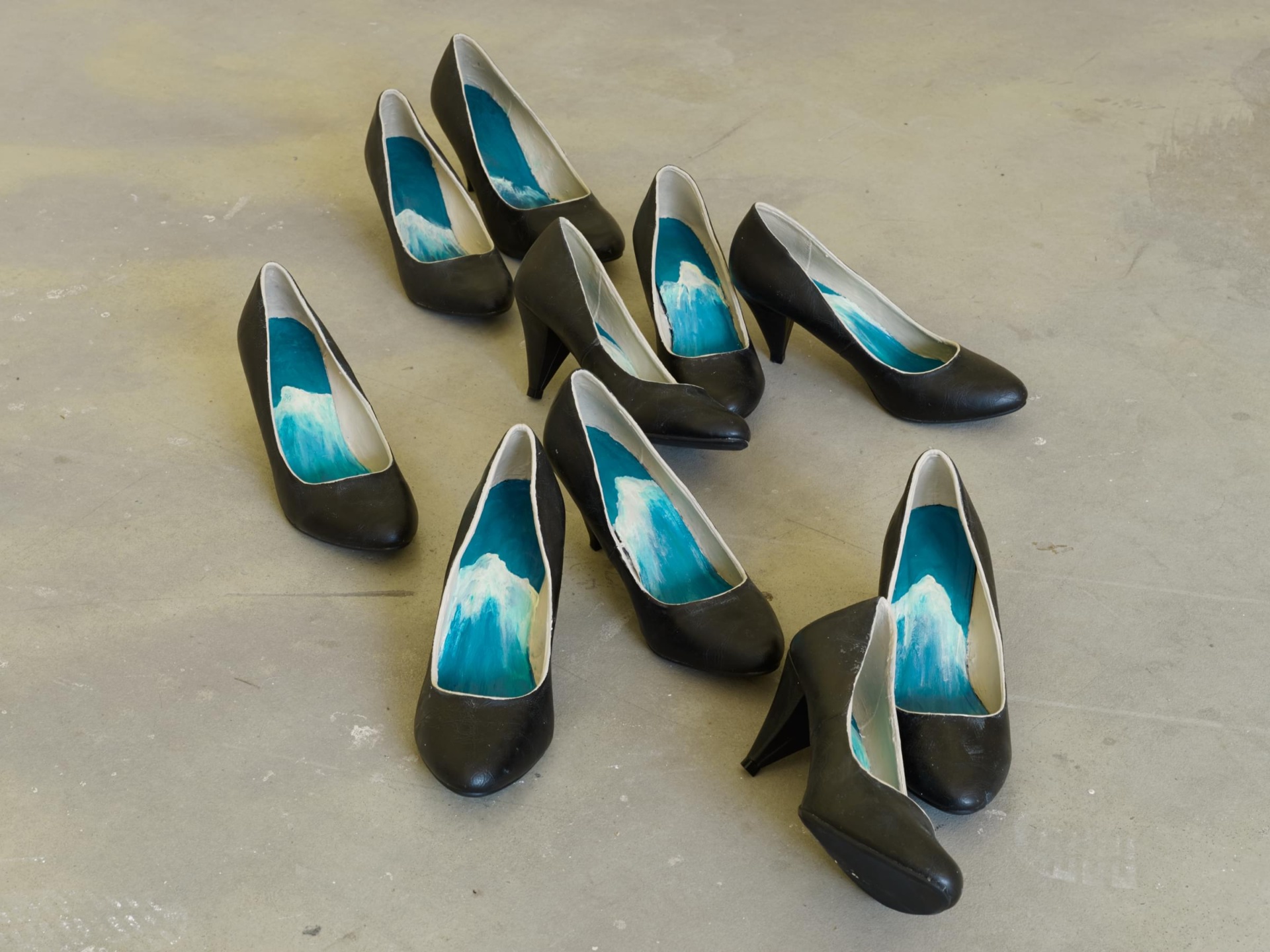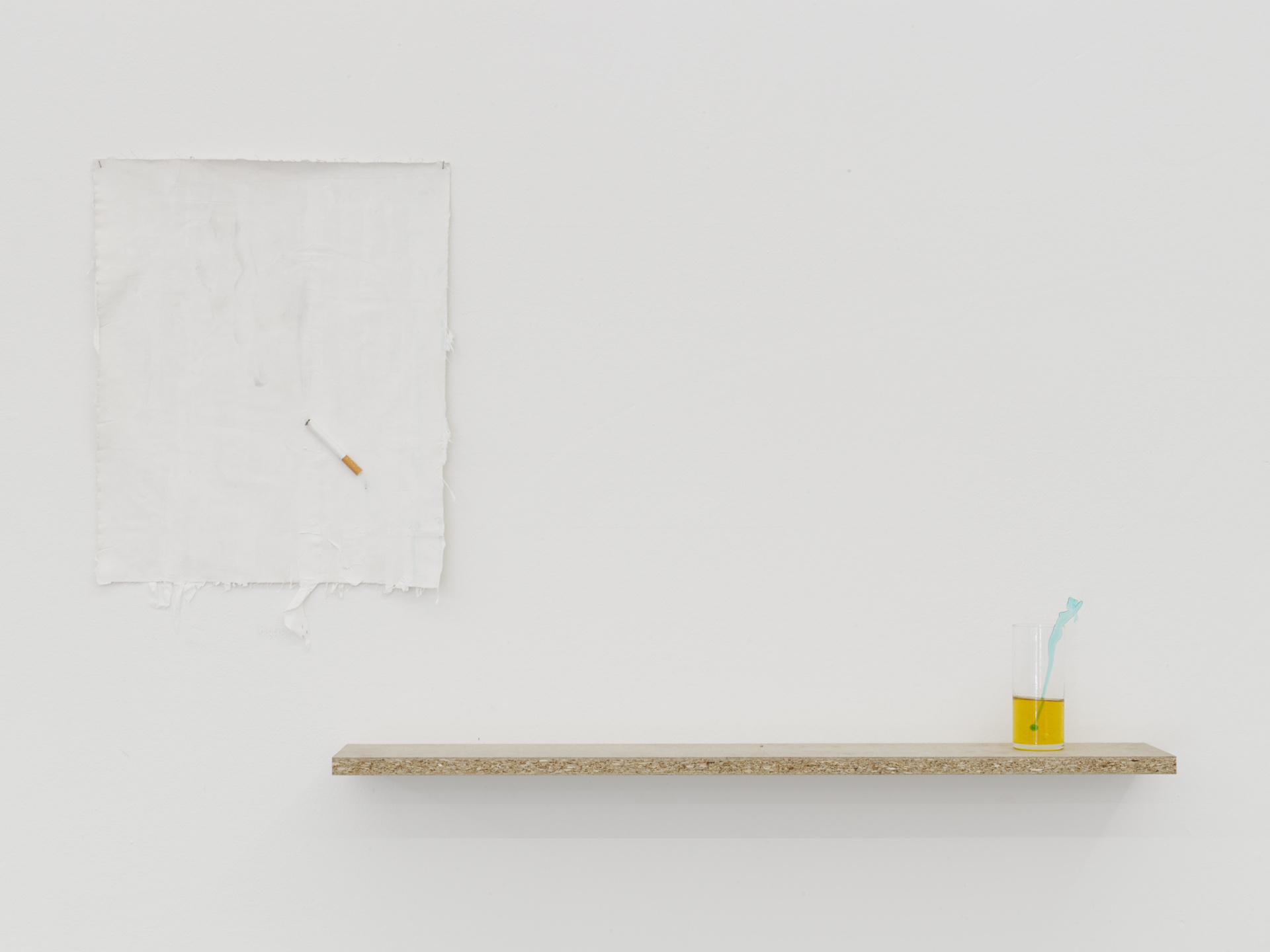
Émilie PitoisetAll the Gold that I have
Dear Émilie,
I’m laying on my divan, thinking of all the aesthetic adventures you’ve embarked me on over the last years, our friendship. The Indiscreets – your beautiful mask of black leather gloves, our ceremonies, A single error – the fan of cards, our secrets, the coat cut in two, The Mask as you titled this precious fish skin, The Story teller – your beheaded peacock painting. We’re all beheaded storytellers trying to understand. All those people that are trying to explain artworks are doing nothing else than killing them – at least in the eye of the beholder. But then claiming that one doesn’t understand at all, or not wanting to communicate the little she or he knows, is even worse.
I’m surrounded by deities, perfumes, stones and odd sculptures I’ve collected over the years. In front of the mirror, your shell. You were molding it while thinking of something else. And then it suddenly appeared, like an unconscious form. One can see that it has travelled a long way. I’m holding it in my hand, trying to imagine what you were thinking of when you created it. Was it a new piece? A lover? The mysteries of the universe? Different characters perhaps. Impossible to know. Is there any bigger pleasure than the acceptation of not knowing?
Your objects and stage-sets are filled with a presence of absence. Like Schrödinger’s cat, they are both there and not there. Caught in a zone where the gaze no longer recognizes itself since the being is constantly changing. Beginnings can quickly lead to an end, especially when one works with the most immaterial matter of them all – desire.
You once told me about your reply to Hans Ulrich Obrist’s question “What is the future?” and your answer was: “The future is what starts over, again and again”. In your exhibition Vous arrivez trop tard, cérémonie [You came too late, ceremony] that you organized together with Catherine Robbe Grillet and Jean Max Collard people were invited to question the ceremony as a form that had already taken place. Was it linked to your love for Duchamp and his conviction that in front of an artwork that someone has made, one always gets the feeling of having arrived too late? I know it’s a concept that haunted you for a long time. The same year you started working with backdrops, fictions that became scenes, objects that started playing different roles.
Beginning of 2013, was the year we finally met. I was preparing The Chessroom, locking up artists in castles forcing them to write collective novels. I was so exhausted that I had to lie on the couch, when you visit me. I felt like a diva from an old movie. And you, you didn’t want to tell me anything about your work. You told me – “It doesn’t feel as if I need to. You’ve understood everything that needs to be known already”. And so we have ever since. You were in the middle of your Surrealist misunderstandings and questioning the rituality of the exhibition, small every day gestures that became grandiose metafictions, perhaps already thinking of new pieces. It was also the year of your solo show Silent Actions where you exhibited the mask, the shell and all my favourite artworks, that have hunted me violently ever since, first showed in Frac Champagne Ardenne by Florence Derieux, afterwards ending up in Black Moon, my small exhibition at Palais de Tokyo telling the story of a man and a woman that meet, love and fight in a exhibition space, battling with Lacan’s famous quote “Love is something that you don’t have that you’re giving to someone that doesn’t want it”. Your works played – as you know – a crucial role, and I’m still shivering when I’m thinking of the way our actors (Mathieu Demy and Sabrina Seyvecou) interacted with them.
In 2014, you did the performance of the Un chat est un chat [A cat is a cat] at Musée de la Chasse in Paris. I finally started my curatorial adventures with The Peacock novel-exhibition, collecting desires, and you became a protagonist in it. I asked you to do a dinner performance The Peacock diner where we invited Catherine, Beverly and a lot of other ‘Romanesque’ guests. We asked people to bring the object, which haunts their imagination and asked them to talk about it at the table. For the first time in my life, I was on the other side of the image, that is behind it, preparing it with you, side by side. What a joyful experience that was! To attend the genesis of a work of art while seeing you coming up with all the ideas, conceiving and realizing the importance of keeping silent about some of its dimensions. One of the many things we have in common is our passion for the aesthetics and ethics of withdrawal.
The other day, when I came to your studio, everything was there, enlarged, fragilized and twisted. The hand. This incredibly strange, gigantic hand, that lied there, as if it was begging and caressing, presenting and giving, looking like the hand of a lost deity, coming from the Caprian cliffs of Jean Luc Godard. The cigarette on the canvas. A fur on the wall. Gloves striking a pose. And there they were. Your mountain shoes. Your mental undressing. Like always, every object wanted to lose their original value and become something else. Everything was fossilized, yet more alive then ever, caught in a zone of improvisation, jazz and psychoanalytic associations.
You told me “This is all the gold that I have. Tell me the story, how you invest in objects? What are the meanings and representations you feed them? Will your story give them a different value? What if the value of an art work was big story, a huge fiction?”
You talked about Matisse, Benjamin and Aragon and their relations to objects, I came back to Freud I think, as I always do. Since Freud didn’t have any Freud who could analyze him, art became his ultimate interlocutor. What do we do when we lie on the divan, or look at art? (Some times we can do both) We tell stories. And the stories we tell about all these stories are, I would say, invaluable.
Tomorrow you’re leaving for Berlin, I’m leaving for Taipei, can’t wait until we’ve returned, so we can continue what has only begun…
With all my love and friendship, have a great opening of the exhibition,
Sincerely yours.
Sinziana
Paris, 7th September
Sinziana Ravini
Editor-in-Chief of Paletten Art Magazine
Teacher in Art Theory at Paris 1, Sorbonne University
Director of The Future Lasts For Ever
Independent Critic and Curator

























